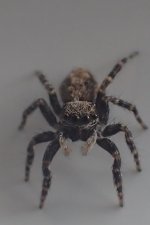I've posted on this forum because taking photos of some, tiny micro species is really pushing the boundaries.
I've been using a Panasonic bridge camera (an FZ1000 + a Raynox 250) for a couple of years and it's very challenging trying to get good images of a beast with a forewing length of, say, 4 mm. Obviously the depth of focus is razor-thin but sometimes I get lucky. In general though, the images seem somewhat lifeless.
I would like to know what other people use, before I end up splashing out tons of money on expensive kit that isn't really going to improve things. My preference is for shooting handheld. When not taking moth photos I'd like to be able to take images of insects I encounter when out and about.
I'd love to hear what is being used successfully or, indeed , how I can make the very best use of the FZ1000.
All the best,
Thomas
I've been using a Panasonic bridge camera (an FZ1000 + a Raynox 250) for a couple of years and it's very challenging trying to get good images of a beast with a forewing length of, say, 4 mm. Obviously the depth of focus is razor-thin but sometimes I get lucky. In general though, the images seem somewhat lifeless.
I would like to know what other people use, before I end up splashing out tons of money on expensive kit that isn't really going to improve things. My preference is for shooting handheld. When not taking moth photos I'd like to be able to take images of insects I encounter when out and about.
I'd love to hear what is being used successfully or, indeed , how I can make the very best use of the FZ1000.
All the best,
Thomas






